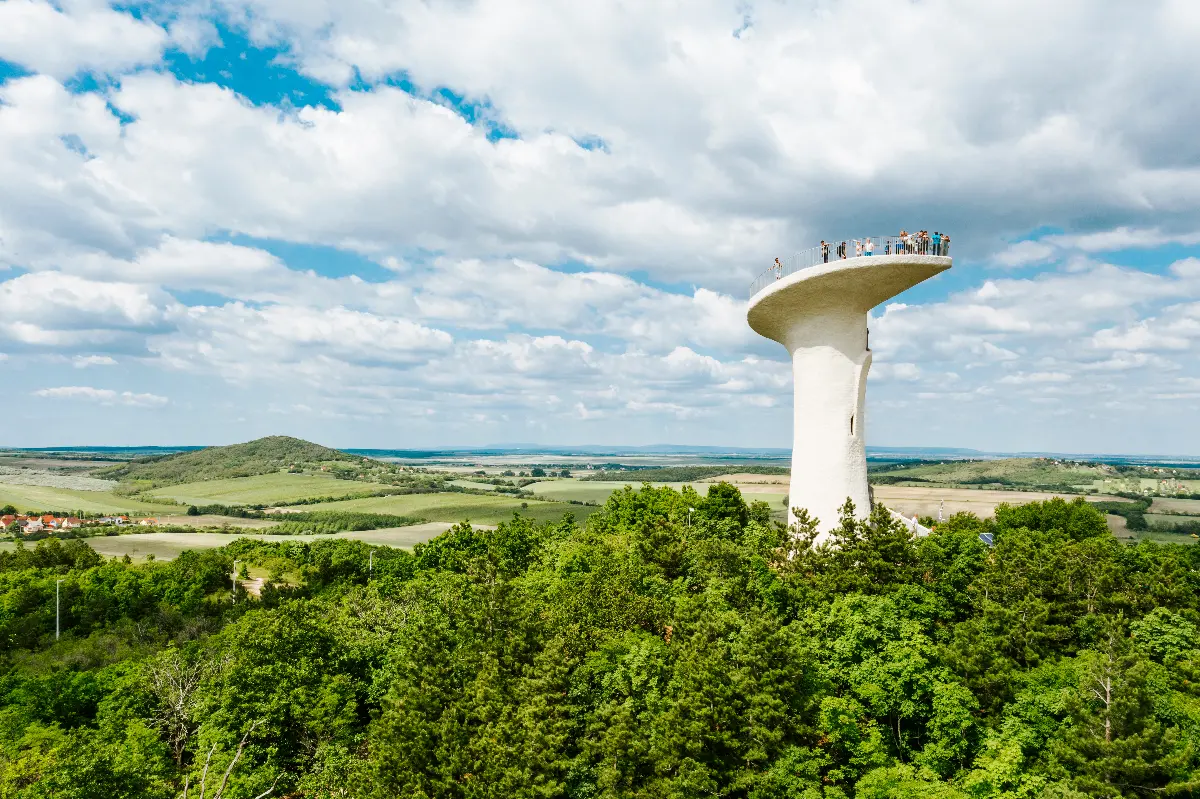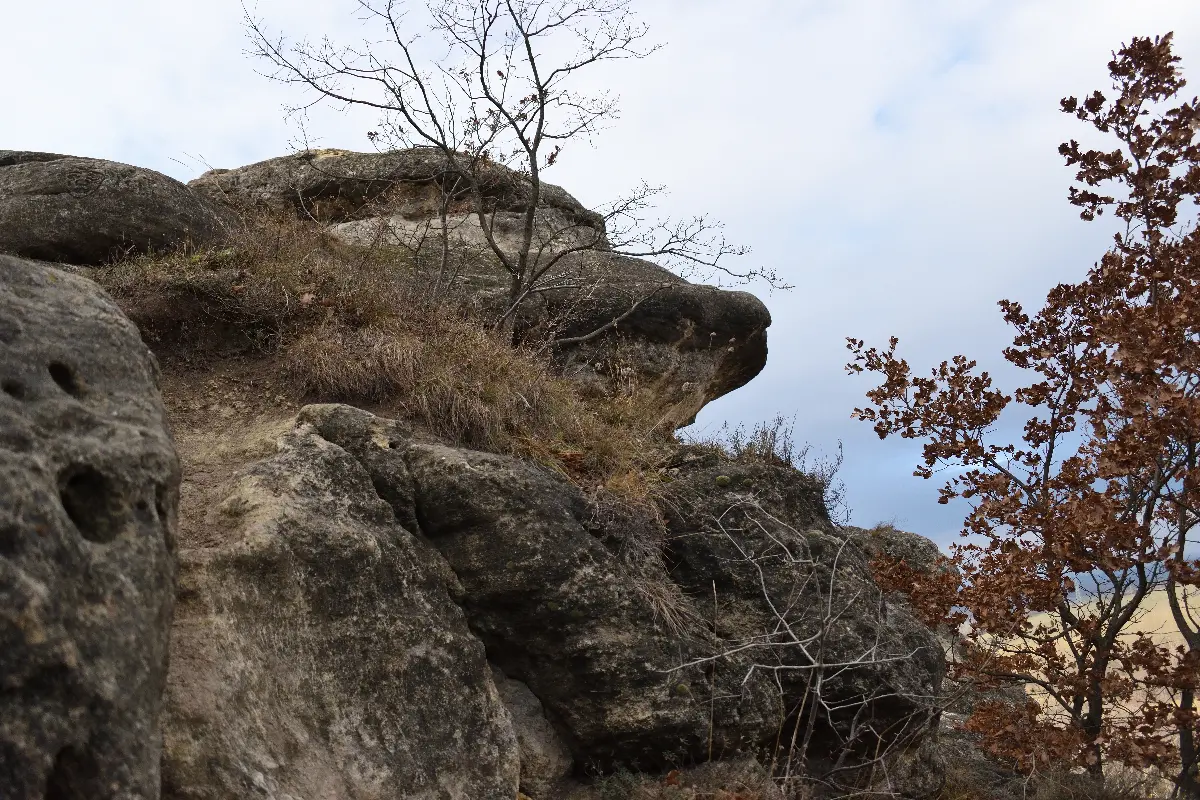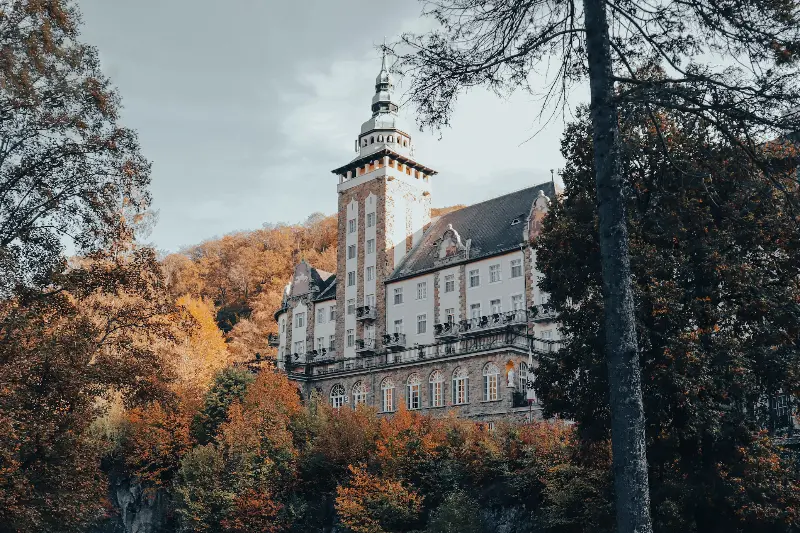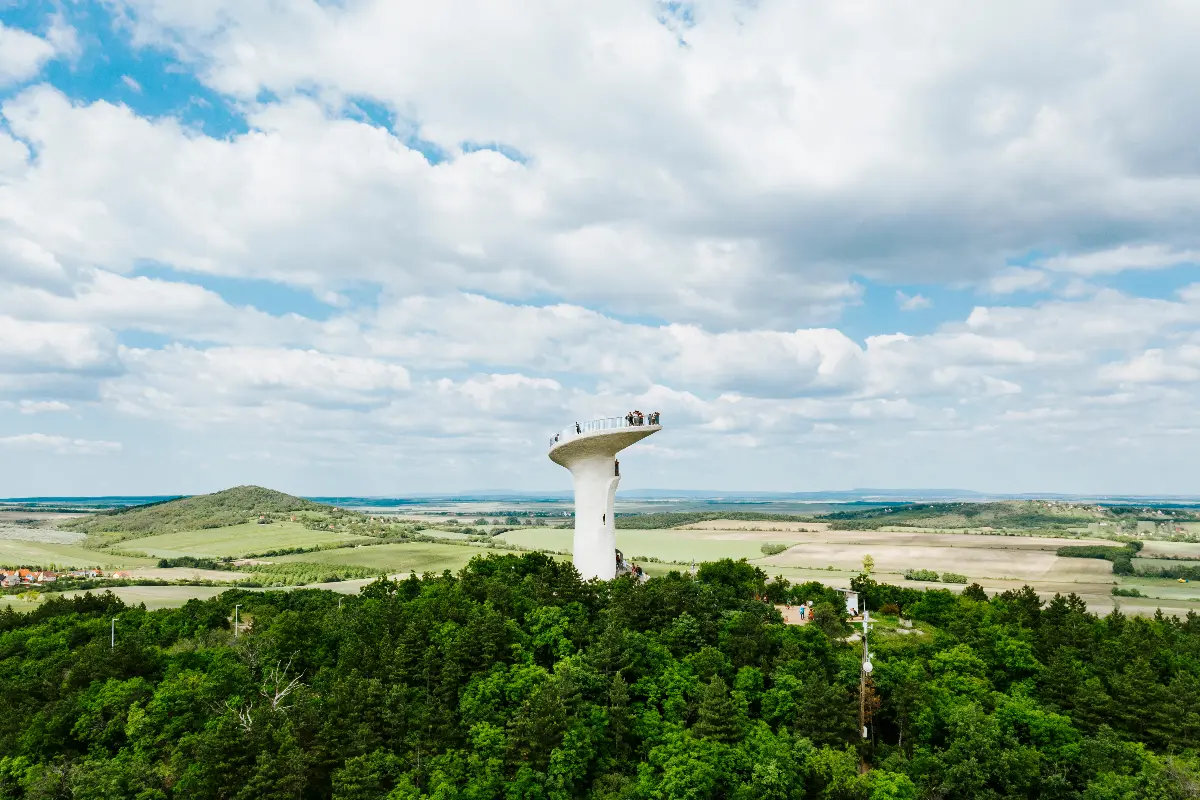
Helyszín címkék:
Heights and depths – lookout points and underground locations near Etyek
Káldi Emese
Up from down and down from up
Biatorbágy equals the viaduct. The railway bridge became well-known after Szilveszter Matuska’s tragic assassination in 1931. Today, it is a fascinating observation point. From down below, it seems vertiginously high, still it is worth climbing it and walking on what was once a railway where you can even cycle through. At the end of the 1800s, only one bridge was built over the valley; later, there was a need for another bridge because of the increased traffic. From the top of the building, which is not bad as a sight either, behind the houses of once two villages, Bia and Torbágy, emerge the hills, hiding the already mentioned mines. Among these, the 224-metre-high Nyakas-kő can be your next destination. The picturesque plateau can be familiar for Instagram fans: tourists take photos here hanging their feet, in groups or alone, demonstrating their accomplishment. There is something to be proud of: after a steep ascent, you have to almost climb to get to the overhanging cliff of an interesting shape. As you climb, you touch soft limestone, used nationally by 19th-century builders: the Parliament and the lions of the Chain Bridge were all made of the material retrieved in the local quarries. Here the sight is not owed to a bored stone sculptor: wind, frost, and water fretted the several residual layers of Nyakas-kő to different degrees. Whether you look from below or from one of the nearby rocks, it is visible how sandy and stony layers alternate. If you climb up, you will not be left without a reward. The sight of Biatorbágy, Lake Bia and the surrounding area is magnificent.

Inside and outside
Of course, our ancestors did not use the hills of the area only for quarrying or contemplation. Even the Neanderthal caveman found shelter inside them since the soft limestone eroded here and there, so much over time that caves formed in it. Near Tatabánya, you can find several smaller and larger caves; the most spectacular one is Cave Szelim. The narrow entrance opening from the touristic path leads to a breathtakingly large hall, the beauty of which derives not only from the rock walls’ diverse motifs but its other cavities. Towards the sky, ruptures; toward Tatabánya, “windows” provide the frame for looking around and taking photos. If you arrive in time, you can even see the setting sun’s rays entering the cave and providing the walls with an orange shade. Undoubtedly, the place gives the impression of a pleasant home, therefore, it is not surprising that archaeological excavations have proved that it has been in continuous use during many millennia. Bones and objects found here also confirm this fact.
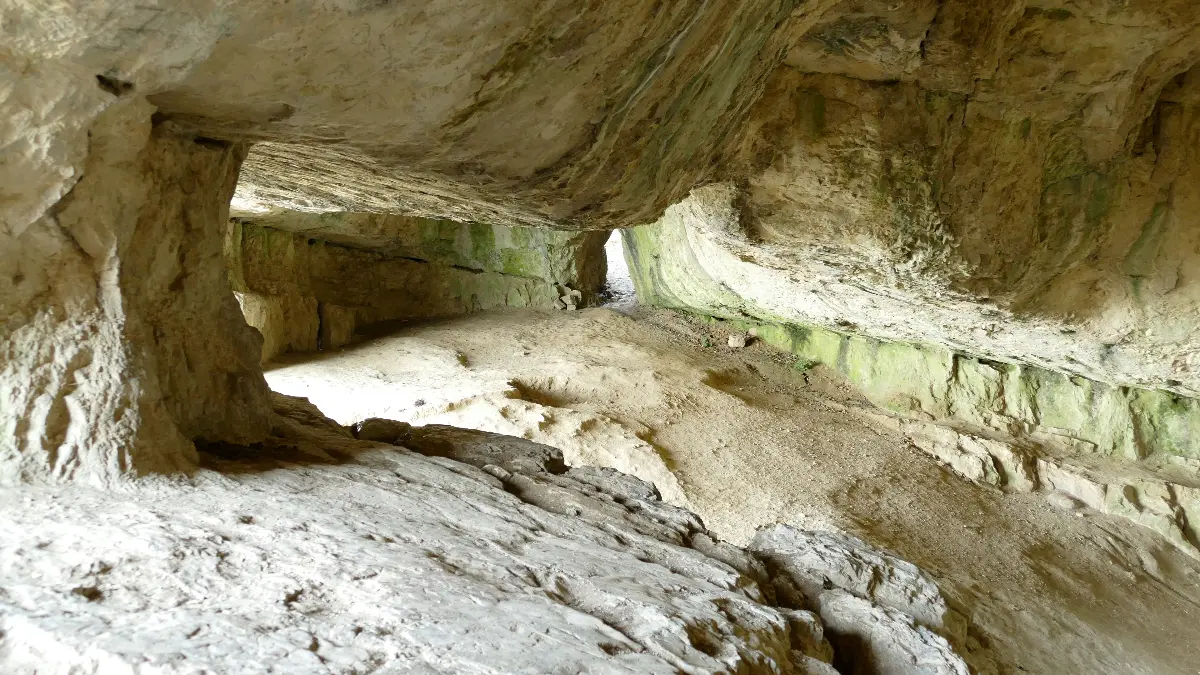
Cave Jankovich the other side of Gerecse Hill, next to Bajót village, is still inhabited. Not by humans, though, but animals. A populous bat colony lives here, or at least in the backroom, which had been intact for almost 3000 years. During the excavation in 1913, the part that the debris blocked during the ice age was demolished – valuable material was found here: from blades made of the teeth of a cave bear to various stone tools. The cave is still an exciting sight: you can see the sky through the rupture on the 20-metre-high dome while the back room is almost pitch dark. Besides some passing bats, you can see beautiful stalactites on the wall if you take a flashlight with you.
Near and far
Nowadays, one mostly climbs mountains and hills to admire the area from the top. Nationwide, more lookout towers are being built, such as in Vértes, on top of the Kis-Kopasz Hill, which is 424 metres high. The larch tower of the Körtvélyesi belvedere has been there since 2015. You can see Tatabánya, Gerecse, and even the Pilis from the top of it if the weather is good. It is worth bringing our telescope because besides the faraway sights -– such as the Turul sculpture over Tatabánya – there are closer details to notice: you can spot some animals from the nearby forests. One of the unique lookout towers of the Velence Hills has an entirely different spirit. The structure called “Concrete flower” at Bence Hill has been welcoming visitors since 2018. The tower made of stone and concrete really reminds us of a flower but you can see different forms from each side. And if you climb the flower’s stalk hiding over one hundred steps, from the middle, you can see even Vértes and admire Lake Velence and the tiny houses of the nearby villages at length.
It is time to go.
